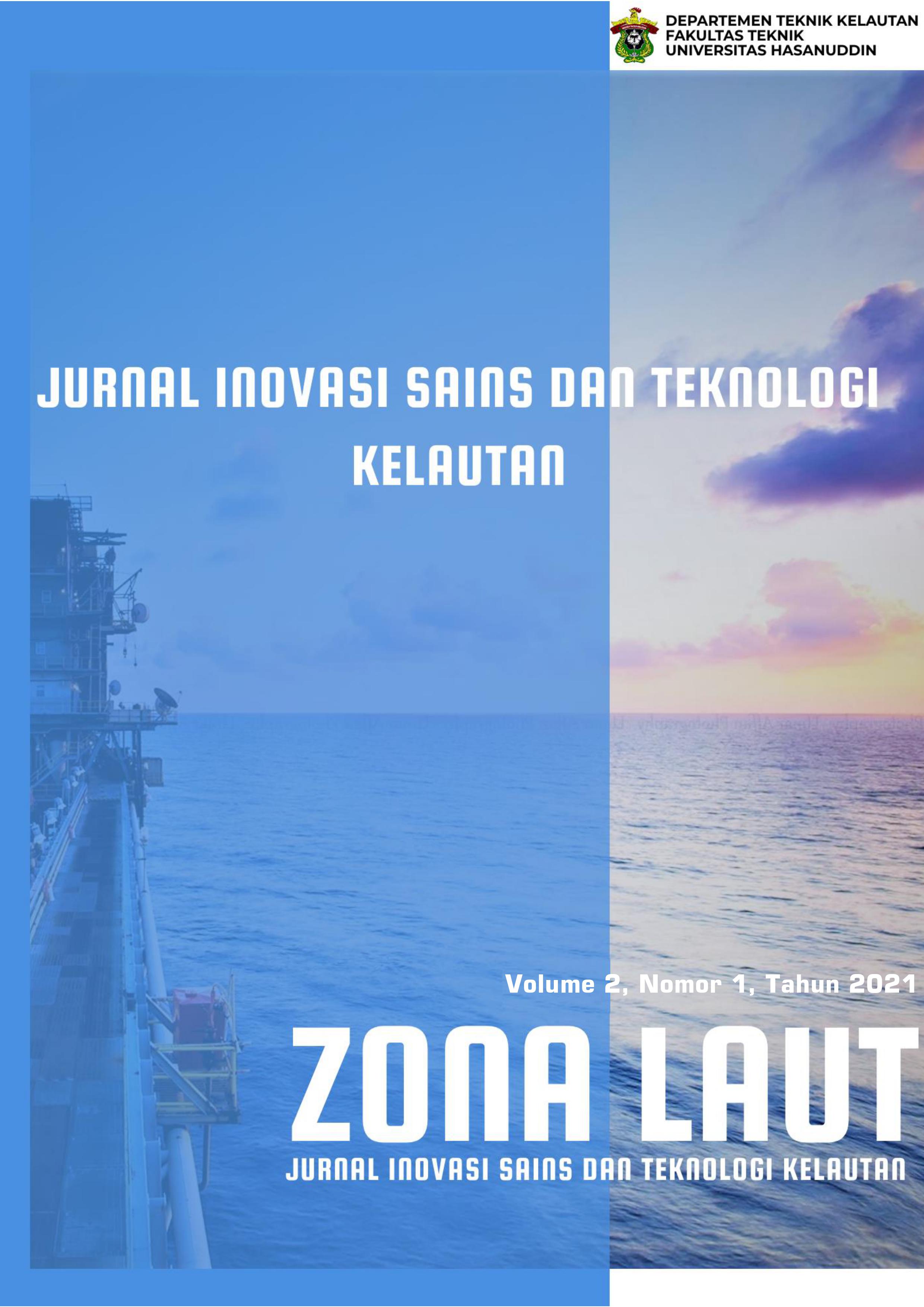Analysis Of The Influence Of Total Content On Tank Sloshing Load On Tanker Vessels Using Numeric Method
Main Article Content
Abstract
Tank is a cargo storage container and is the main part of ships carrying liquids and gases so that the cargo is maintained and safe. As a storage medium, the tank will always get loads that come from inside as well as loads that come from outside the tank, sloshing is one of the loads that come from inside. Sloshing occurs due to the movement of the vessel/tank resulting in free motion of oscillating fluid hitting the tank wall. The purpose of this study was to find the effect of the load on the movement and sloshing load on the tank with variations in the amount of load. The tank model used is a reference to a general purpose tanker transporting crude oil in two-dimensional rectangular conditions (midship) with a width of 8,6 m and a height of 8 m on both the left and right sides. The variations used are 10% load volume (0,8 m high), 30% volume (2,4 m high), 50% volume (4 m high), 70% variation (5,6 m high) and 90% variation (high 7,8 m). The simulation was carried out with a numerical method, namely Computational Fluid Dynamic (CFD) using Ansys Fluent software. The back of the tank is based on the movement of the ship which in this case is limited to heaving and rolling motion, from the simulation results it is concluded that the biggest sloshing effect occurs at the load volume variation of 10%, the frequency is 2.145, while the greatest pressure occurs at the lower left corner of the tank with a pressure of 443,29 Kpa.
Downloads
Article Details

This work is licensed under a Creative Commons Attribution 4.0 International License.
Allow anyone to modify, improve, and make derivative works, even for commercial purposes, as long as they credit to you for the original work.
References
Anderson J.D, J. (1995). Computational Fluid Dynamics: The basics with applications. ISBN 0-07-113210-4: McGraw-Hill.
Bhattacharrya, R. (1978). Dynamics Of Marine Vehicles. New York: Wiley Publication.
Djatmiko, E. B. (2012). Perilaku dan Operabilitas Bangunan Laut di Atas Gelombang Acak. Surabaya: ITS Press.
International Chamber of Shipping. (2006). International Safety Guide for Oil Tankers and Terminals. London: Witherby & CO.LTD.
Mahmud, R. (2018). Studi Pengaruh Peletakan Sekat Memanjang Pada Tangki Kapal Terhadap Stabilitas Kapal Tanker. Gowa: Universitas Hasanuddin.
Marton, G. (2007). Tanker Operation Fifth Edition. Mary Land England.
Mikelis N and Journee. (1984). Experimental and Numerical Simulation of Sloshing Behaviour in Liquid Cargo Tanks and Its Effect on Ship Motion.
Nuswantara, d. (2014). Regasification of LNG (Liquefied Natural Gas). Surabaya: Institut Teknologi Sepuluh Nopember (ITS).
H. Palippui dan S. Ramadhan, “Analisa Kekuatan Struktur Barge Pada Proses Load Out Offshore Module (Top Side) dengan SPMT”, zonalaut, vol. 1, no. 1, hlm. 1-5, Mar 2020.
Pratama, Y. A. (2017). Simulasi Sloshing Pada Tiga Tipe Tangki Kapal Akibat Gerakan Pitching Dan Heaving. Surabaya: Institut Teknologi Sepuluh Nopember.
Sholeh, R. F. (2015). Transversal Sloshing Analysis for Independent Supporting Tank Type C LNG Carrier Due to Ships Swaying, Heaving, and Rolling Motion Using Computational Fluid Dynamics Method. Surabaya: Institut Teknologi Sepuluh Nopember.
Vinaya, e. a. (2013). Perancangan Sistem Kontrol Trajectory pada Kondisi Ganguan Arus Laut Non Uniform di Ketapang-Gilimanuk. Surabaya: Institut Teknologi Sepuluh Nopember.
Yunus A, et al. (2006). Fluid Mechanics Fundamentals And Application. Americas, New York: McGraw-Hill.

